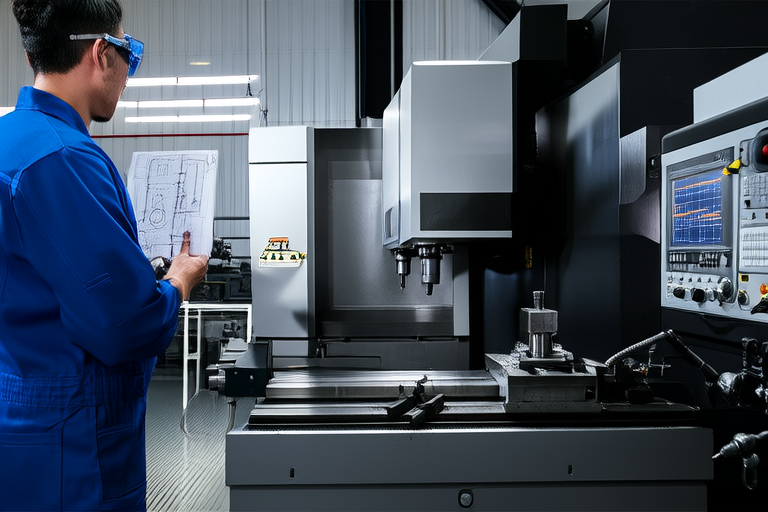From Prototype to Production: The Power of Technology
Introduction
The journey from developing a technological prototype to bringing it into full-scale production is a critical phase in the tech industry. This process not only defines the success of a product but also sets the stage for its market acceptance. In an era where innovation is paramount, understanding the intricacies of this transition is essential. Technology plays a pivotal role in enabling smoother transitions, making it easier to bridge the gap between idea and reality.
This article delves into the key challenges, strategies, and innovations involved in transitioning from a prototype to a market-ready product. It provides insights into how companies successfully navigate this complex process, ensuring that their innovations reach consumers efficiently and effectively.
The Prototype Stage
A prototype is essentially a preliminary model or sample representation of a proposed system or product. Its primary purpose is to demonstrate the feasibility of a concept, allowing designers and engineers to test and refine their ideas before committing to full-scale production. Prototypes come in various forms, including functional prototypes, which mimic the actual product’s functionality; visual prototypes, which focus on appearance and user interface; and working prototypes, which are closer to the final product in terms of both form and function.
The iterative nature of prototyping is crucial. Each iteration allows for improvements based on feedback, whether from internal teams or potential users. This feedback loop ensures that the final product meets user expectations and performs optimally.
Key Challenges in Transitioning to Production
Transitioning from prototype to production is fraught with challenges. Scalability, cost management, quality control, and regulatory compliance are among the most significant hurdles. Ensuring that a product can be manufactured at scale while maintaining consistent quality is often a daunting task.
Cost management involves balancing the need for high-quality materials and processes with the economic viability of mass production. Quality control is equally important, as any defect in the prototype could lead to widespread issues in the final product. Regulatory compliance adds another layer of complexity, especially in industries subject to stringent standards.
For example, Tesla faced significant challenges in scaling up its production lines for electric vehicles. By optimizing their supply chain and implementing advanced manufacturing techniques, they were able to address these issues and bring their innovative vehicles to market successfully.
Strategies for Successful Transition
To ensure a smooth transition from prototype to production, several best practices must be followed. Thorough testing and validation are paramount, ensuring that every aspect of the product functions as intended. Collaboration between design, engineering, and manufacturing teams is essential, fostering a unified approach to problem-solving.
Supply chain management and resource allocation play a crucial role in this process. Efficient logistics and strategic partnerships help mitigate risks associated with delays or shortages. By addressing these areas proactively, companies can streamline their operations and reduce the likelihood of disruptions.
Innovations Driving the Process
Recent advancements in technology have significantly streamlined the transition from prototype to production. Automation, artificial intelligence (AI), and the Internet of Things (IoT) are among the tools that have revolutionized this process.
Automation enables faster and more precise manufacturing, reducing human error and increasing efficiency. AI enhances predictive maintenance and quality control, ensuring that potential issues are identified early. IoT facilitates real-time monitoring and data collection, providing valuable insights into product performance and user behavior.
Case studies from companies like General Electric and Siemens illustrate how these innovations have been effectively implemented. By leveraging AI and IoT, these firms have optimized their production processes, leading to improved product reliability and customer satisfaction.
Real-World Examples
Several companies have successfully navigated the transition from prototype to production, offering valuable lessons for others in the industry. For instance, Apple’s iPhone series has consistently pushed the boundaries of mobile technology. Their approach involves rigorous testing and validation, coupled with meticulous attention to detail in design and manufacturing.
Another notable example is SpaceX’s reusable rockets. Through innovative engineering and meticulous planning, SpaceX has managed to reduce launch costs and increase accessibility to space exploration. These real-world examples highlight the importance of a well-executed transition and the positive impact it can have on the market and consumer experience.
Conclusion
In conclusion, transitioning from prototype to production is a multifaceted process that requires careful planning and execution. By addressing key challenges, adopting best practices, and leveraging cutting-edge technology, companies can ensure a smooth and successful transition. The importance of a well-executed transition cannot be overstated, as it directly impacts the market acceptance and long-term success of a product.
Looking ahead, the future of this process holds great promise. Continued advancements in technology will likely further streamline and enhance the transition, making it even more efficient and effective. As the tech industry continues to evolve, staying ahead of these trends and innovations will be crucial for sustained success.




